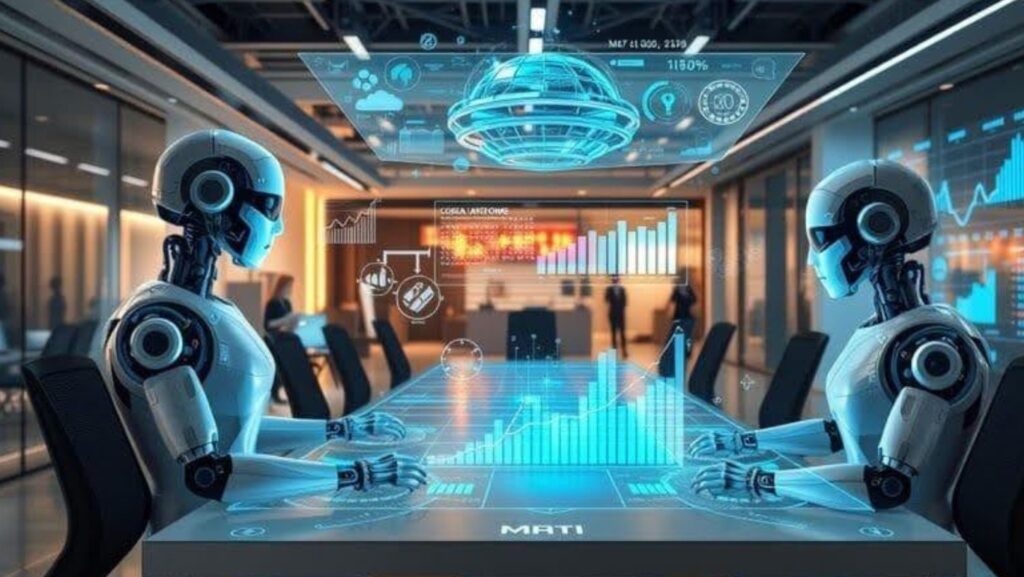
Imagine a world where code is not just a set of instructions, but a conversationalist who can analyze, suggest, correct, and even create with a human. This is not fantasy, it is already becoming a reality in the field of development using AI development services. This evolution significantly changes the approach to creating software products: now development ceases to be just a routine or engineering work. It becomes a dialogue between a person and a machine. In this article, I will consider when and how code “starts to think”, how AI becomes a co-author, and how this transforms the entire process of creating products. And in this context, we’ll describe the experience of the N-iX company as an example of how a certain organization adapts to this new reality.
At What Point Can Code Be Considered “Thinking”?
Of course, “thinking” in the full human sense is still a metaphor. But if “thinking” is understood as the ability to make decisions, learn, generate new solutions, and adapt, then some code is already “thinking.” This is achieved through machine learning algorithms, deep learning, model-based approaches, and generative models.
When code begins to take context into account, analyze historical data, and predict future actions, it ceases to be a passive performer. For example, when a model in the system analyzes user behavior, predicts user needs, and suggests a product change or feature before the team has even thought about it, this is one form of “thinking code.”
Key signs that code is “thinking”:
- Adaptability and learning: it learns from new data and changes its behavior without direct intervention.
- Variant generation: it suggests different solutions, rather than simply following a clear instruction from a sample.
- Risk and uncertainty assessment: it can analyze probabilities, make choices among scenarios, sometimes even with partial information.
- Creativity: in the case of generative models, creating new text, images, designs, code.
This is where we begin to distinguish AI not just as a tool, but as a partner.
From Tool to Co-Author: AI as a Partner
In the traditional software development model, we have a person (product manager, designers, engineers) and tools (code editors, libraries, templates). They help, but they don’t “think”. AI development services bring a new dimension: a tool that can generate ideas, analyze behavior, and create code.
Let’s look at a few examples:
- Code autocompletion and companion modules. Modern tools (like Copilot, Tabnine, and their alternatives) already offer line completion, templates, and on-the-fly error correction. This isn’t just auto-replace, it’s intent prediction.
- Content and design generation. Generative models can generate text, graphics, UI templates, and page designs that designers can then correct and refine.
- Analytics and insights. AI can analyze vast amounts of data on user behavior, suggesting new features or optimizations before the team even thinks of them.
- Autonomous agents. In some cases, AI can act as an agent that performs certain tasks independently, for example, responding to client requests, generating test scripts, automatically checking the correctness of the code.
In this role, AI becomes a co-creator, not just an assistant. The person (as a curator, mentor, proofreader) and AI (as a catalyst, idea generator, analyst, autonomous agent). This changes the psychology of work, the decision-making process and the organization of teams.
How This Transformation Is Changing the Approach to Product Creation
1. The development interface is changing
Previously, the product and technical teams created requirements and design, and programmers implemented. Now, at the idea stage, AI can already create prototypes (wireframes, texts, mockups), testing several options in parallel. This significantly reduces the time for the initial stages. Accordingly, the role of a person is to control, guide, choose.
2. Flexibility and speed of iterations
If earlier iterations required direct changes in the code, testing, checks, now AI can automatically generate options, test scenarios, collect user feedback and propose a new iteration. This speeds up the creation cycle and reduces the “dead time” between versions.
3. Focus on value and creativity
When AI takes over routine tasks (bugs, refactoring, data analysis), people can focus on creativity, concepts, intuitive and strategic vision of the product. This increases the value of human input.
4. Integration between data, analytics, and product
Previously, analytics was an external service (data collection, reports, fleeting insights). But when the code “thinks”, analytics and product merge: the model in the code analyzes the data itself, optimizes the product’s behavior in real time, and adapts the UX to the user. This changes the architecture: data needs to be available, models need to be updated, and the infrastructure needs to support this flow.
5. Requirements for infrastructure, AI management and security
As AI becomes an active part of the product, there is a need for reliability, scalability, ethical control and a secure model lifecycle (MLOps). Monitoring systems, model validation stages, rollback mechanisms, protection against abuse are needed. Thus, architects and DevOps engineers must consider not just the code, but also the models, data, updates, model drift.
Impact of AI Development Services on Business and Industry
When AI becomes part of the product creation process, the entire business landscape changes:
- Companies are able to get to market with innovative products faster.
- The cost of errors is reduced, because AI can identify risks or shortcomings at an early stage.
- Preference is given to those who can integrate AI not as an experiment, but as the core of the product cycle.
- The role of the engineer is changing: he turns into a model controller, integrator, AI curator.
- Companies specializing in AI development services are emerging. They become a strategic partner for business.
Here it is appropriate to mention an example: The company N-iX provides AI development services, including AI consulting services, agent creation, LLM fine-tuning, chatbots, as well as PoC and support. It has already implemented more than 60 projects in various industries and has a team of more than 200 experts in the field of AI, ML and Data Science. This demonstrates how the company combines research, technical, and product expertise to make AI not a passive tool, but part of the product process.

This experience shows that implementing AI makes sense not episodically, but systematically, and that a partner with deep competencies can be a critical element of success.
Conclusion
When code starts to think, it is the end of the era when AI was just a tool. Instead, an era begins when AI becomes a partner in creativity, analytics, and product thinking. This is not just a technological revolution, it is a cultural one, including a change in roles, values, architecture, and ways of collaboration.
Of course, this path is not easy: it requires readiness for change, investment in infrastructure, and cultural and organizational adaptation. However, those who can incorporate AI as an equal partner will gain a significant competitive advantage. After all, a product created not by a person for the user, but by a person together with AI is a product in which the future is built.
And the example of companies that are already working in the field of AI development services, such as N-iX with its portfolio of AI projects, shows that this transformation is not just a goal, but a path that is already being followed. In a world where code thinks, you have to choose whether to be a spectator or a co-creator, and your choice will largely determine your success.










